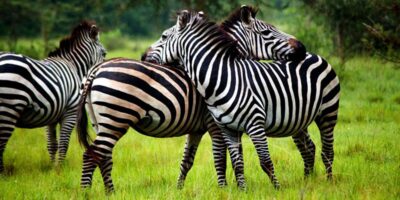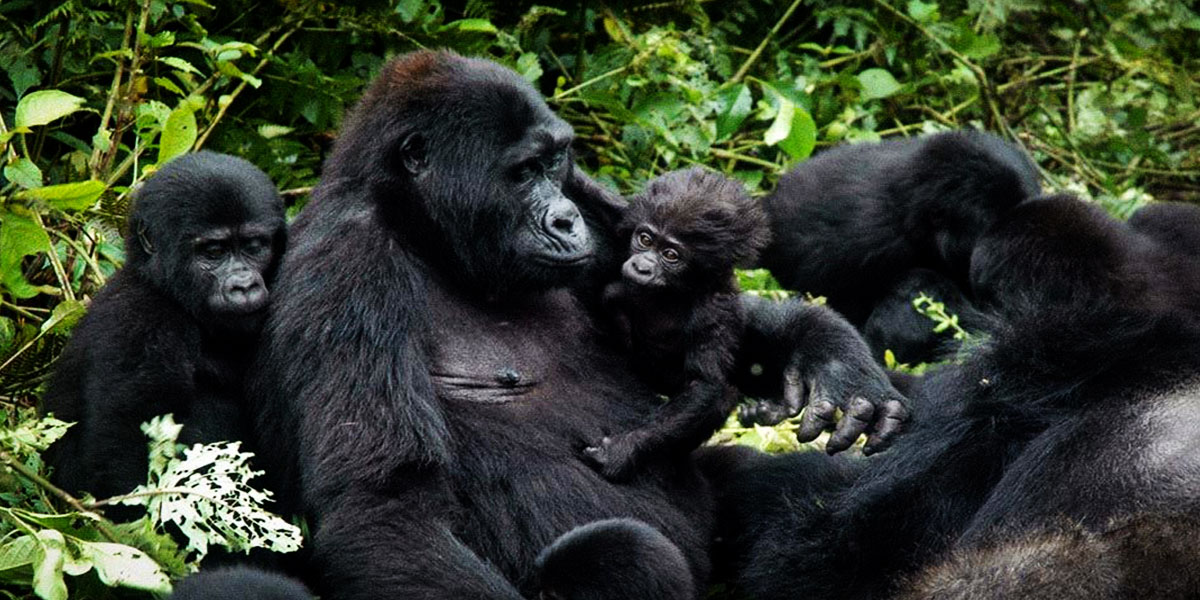Commonly known as mountain gorillas is one of the two subspecies of the eastern gorilla. They are so endangered and there are only two populations. One is found in Mgahinga Gorilla National Park and Bwindi Impenetrable National Park in south-west Uganda and by the time of writing there are approximately 380 individual at the park and many tourist flop in to enjoy watching them in their natural setting. The other population is found in the Virunga volcanic mountains of Central Africa, within two National Parks; Volcanoes, in north-west Rwanda and Virunga in the eastern Democratic Republic of Congo (DRC). These sub species are regarded as the largest subspecies of gorilla an adult can weigh up to 300 to 425 pounds and upright standing height of 150 cm (59 in) usually weigh twice as much as the females making them the world’s largest primate and they are fewer than 880 individuals left in the world As of November 2012 estimates and Rwanda is the premier destination to track them. The Virunga volcanoes are a drive of 3 hours from Kigali, Rwanda’s capital and its largest city. And the habituated gorilla groups are a little easier to reach from the Rwandan side, than those living in the same mountain range in Uganda and the DRC (just across the border).
These species differ from other species as they have longer and thicker fur enabling them to live in colder temperatures. An adult Male develops the characteristic silver fur on their back that gives them the name ‘silverback’. Their back hair is shorter than on most other body parts, and their arm is longer than its legs un like human and it moves by Knuckle walking like the common chimpanzee but an like the banobo and monkey species.
Gorillas are capable of climbing into fruiting trees if the branches can carry its weight, and it’s competent of running up to 6 m (20 ft). Gorillas move every day for food and for exploration they are most active between 6:00am and 6:00 pm most these hour is spent eating as large quantities of food are needed to sustain its massive bulk. These giant gorillas’ forages in early morning, they rest during the late morning and around midday, and in the afternoon it forages again before resting at night. Each gorilla has to make a nest it’s going to sleep in every evening except young ones which sleep with their mothers until when they are about 3 years of age, and even when they start construct theirs, they still stay near their mothers. Mountain gorillas never sleep in the same place two nights in a row! They make a new one when they sleep in the afternoon and before they sleep for the night.










